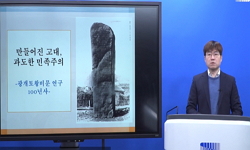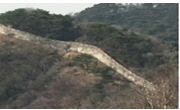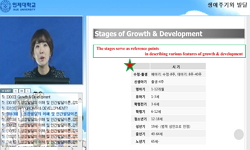This study reviews the main cases and transition process of cloud-patterned roof-end tiles of the Goguryeo Kingdom focusing on those that were excavated in Guknaesung. Therefore, the study deals with the meaning of patterns and words carved into the c...
http://chineseinput.net/에서 pinyin(병음)방식으로 중국어를 변환할 수 있습니다.
변환된 중국어를 복사하여 사용하시면 됩니다.
- 中文 을 입력하시려면 zhongwen을 입력하시고 space를누르시면됩니다.
- 北京 을 입력하시려면 beijing을 입력하시고 space를 누르시면 됩니다.

高句麗 卷雲文 瓦當의 成立과 그 背景 = Formation of Cloud-Patterned Roof-end Tiles of the Goguryeo Kingdom and Its Background
한글로보기https://www.riss.kr/link?id=A82681307
- 저자
- 발행기관
- 학술지명
- 권호사항
-
발행연도
2009
-
작성언어
-
-
주제어
고구려 ; 기와 ; 와당 ; 권운문 ; 태녕 ; Goguryeo ; roof tiles ; roof end tiles(Maksae) ; cloud-patterned ; Taenyung
-
KDC
900
-
등재정보
KCI등재
-
자료형태
학술저널
-
수록면
153-176(24쪽)
-
KCI 피인용횟수
3
- 제공처
-
0
상세조회 -
0
다운로드
부가정보
다국어 초록 (Multilingual Abstract)
It issuspected that cloud-patterned roof-end tiles started to appear before the end of the early part of the 4th century (the 4th year of Taenyung). The cloud-patterned roof-end tiles at that time were not made due to the influence of China or the Four ChineseCommendaries of Han but made with their own unique patterns and manufacturing method. In particular, in relation to the formation of roof-end tiles, this study focused on analyzing Taenyungmyung tiles and the characters carved on the roof-end tiles. Though they showed similar aspects in terms of basic patterns with the Chinese cloud-patterned roof-end tiles, it was found that there were many unique elements of Goguryeo in the detailed patterns of the central part, the cloud-patterns, and the edges.
That is, even in the same kinds of Taenyungmyung roof-end tiles, the central pattern and cloud-patterns were separated and then connected again.
They are clear and distinct in that the cloud-patterns were divided changing in an 8→4→8→4 motif; that the lotus-pattern newly appeared; that the pattern size was changed to a large one from a small one, and most of all, that the edges were expressed on a plane while the edgings of the Chinese cloud-patterned roof-end tiles were expressed on the concave part.
There were characters on the cloud-patterned roof-end tiles but they were changed to those without characters. Also, the lotus-pattern was reduced gradually. Through such finite changes, they were developed as unique roof-end tiles of the Goguryeo Kingdom and were not under the influence of the Four Chinese Commendaries of Han.
It was analyzed that the edges of the central part of the roof-end tiles of the Goguryeo Kingdom adopted the mirror patterns of Shinsumun or Banryong. As such, the cloud-patterned roof-end tiles with mirror patterns took on the role of protecting buildings and tombs. By assigning mirror images that distinguished the right and wrong described in the words on the eaves of tombs or palaces, they tried to separate the good and right aura entering through the roof from the bad and wrong aura. Those tiles took on the role of guardians that protected tombs and palaces. This came from the unique philosophy of Goguryeo. Therefore, it is required to reconsider the simple position based on a dissemination hypothesis that the early roof-end tiles of the Goguryeo Kingdom were affected by the manufacturing method of those of the Four Chinese Commendaries of Han.
This study reviews the main cases and transition process of cloud-patterned roof-end tiles of the Goguryeo Kingdom focusing on those that were excavated in Guknaesung. Therefore, the study deals with the meaning of patterns and words carved into the cloud-patterned roof-end tiles and the background of the thoughts for a more specific approach to the mental world of the people of the Goguryeo Kingdom.
It issuspected that cloud-patterned roof-end tiles started to appear before the end of the early part of the 4th century (the 4th year of Taenyung). The cloud-patterned roof-end tiles at that time were not made due to the influence of China or the Four ChineseCommendaries of Han but made with their own unique patterns and manufacturing method. In particular, in relation to the formation of roof-end tiles, this study focused on analyzing Taenyungmyung tiles and the characters carved on the roof-end tiles. Though they showed similar aspects in terms of basic patterns with the Chinese cloud-patterned roof-end tiles, it was found that there were many unique elements of Goguryeo in the detailed patterns of the central part, the cloud-patterns, and the edges.
That is, even in the same kinds of Taenyungmyung roof-end tiles, the central pattern and cloud-patterns were separated and then connected again.
They are clear and distinct in that the cloud-patterns were divided changing in an 8→4→8→4 motif; that the lotus-pattern newly appeared; that the pattern size was changed to a large one from a small one, and most of all, that the edges were expressed on a plane while the edgings of the Chinese cloud-patterned roof-end tiles were expressed on the concave part.
There were characters on the cloud-patterned roof-end tiles but they were changed to those without characters. Also, the lotus-pattern was reduced gradually. Through such finite changes, they were developed as unique roof-end tiles of the Goguryeo Kingdom and were not under the influence of the Four Chinese Commendaries of Han.
It was analyzed that the edges of the central part of the roof-end tiles of the Goguryeo Kingdom adopted the mirror patterns of Shinsumun or Banryong. As such, the cloud-patterned roof-end tiles with mirror patterns took on the role of protecting buildings and tombs. By assigning mirror images that distinguished the right and wrong described in the words on the eaves of tombs or palaces, they tried to separate the good and right aura entering through the roof from the bad and wrong aura. Those tiles took on the role of guardians that protected tombs and palaces. This came from the unique philosophy of Goguryeo. Therefore, it is required to reconsider the simple position based on a dissemination hypothesis that the early roof-end tiles of the Goguryeo Kingdom were affected by the manufacturing method of those of the Four Chinese Commendaries of Han.
목차 (Table of Contents)
- Ⅰ. 序論
- Ⅱ. 主要 事例와 變遷
- Ⅲ. 銘文 意味와 思想的 背景
- Ⅳ. 結論
- [Abstract]
- Ⅰ. 序論
- Ⅱ. 主要 事例와 變遷
- Ⅲ. 銘文 意味와 思想的 背景
- Ⅳ. 結論
- [Abstract]
참고문헌 (Reference)
1 정재서, "도교와 문학 그리고 상상력" 푸른숲 2000
2 林起煥, "고구려의 정치ㆍ경제와 사회 in: 한국사" 171-172, 1996
3 정재서, "고구려 고분벽화의 신화․도교적 제제에 대한 새로운 인식 in: 동양적인 것의 슬픔" 동양적인 것의 슬픔 141-142, 1996
4 魏存成, "高句麗考古" 吉林大學出版社 1994
5 耿鐵華, "高句麗瓦當硏究" 吉林人民出版社 2001
6 李梅, "高句麗瓦當發現与硏究" 吉林大學 2002
7 정재서, "高句麗 古墳壁畵에 表現된 道敎 圖像의 意味" 고구려발해학회 16 : 10-, 2003
8 國立文化財硏究所, "韓國考古學事典" 학연문화사 159-, 2003
9 林永周, "韓國紋樣史" 미진사 1983
10 金暘玉, "韓半島 靑銅器時代 紋樣의 硏究 - 새와 사슴 문양을 중심으로 -" 韓國考古學硏究會 10 : 42-, 1981
1 정재서, "도교와 문학 그리고 상상력" 푸른숲 2000
2 林起煥, "고구려의 정치ㆍ경제와 사회 in: 한국사" 171-172, 1996
3 정재서, "고구려 고분벽화의 신화․도교적 제제에 대한 새로운 인식 in: 동양적인 것의 슬픔" 동양적인 것의 슬픔 141-142, 1996
4 魏存成, "高句麗考古" 吉林大學出版社 1994
5 耿鐵華, "高句麗瓦當硏究" 吉林人民出版社 2001
6 李梅, "高句麗瓦當發現与硏究" 吉林大學 2002
7 정재서, "高句麗 古墳壁畵에 表現된 道敎 圖像의 意味" 고구려발해학회 16 : 10-, 2003
8 國立文化財硏究所, "韓國考古學事典" 학연문화사 159-, 2003
9 林永周, "韓國紋樣史" 미진사 1983
10 金暘玉, "韓半島 靑銅器時代 紋樣의 硏究 - 새와 사슴 문양을 중심으로 -" 韓國考古學硏究會 10 : 42-, 1981
11 吉林省文物考古硏究所, "集安高句麗王陵" 文物出版社 2004
12 吉林省文物志編委會, "集安縣文物志" 1983
13 林至德, "集安出土的高句麗瓦當及其年代" 7 : 1985
14 耿鐵華, "集安出土卷雲紋瓦當硏究" 4 : 20-, 2007
15 吉林省文物考古硏究所, "通溝古墓群禹山墓區JYM3319號墓發掘報告" 6 : 23-, 2005
16 吉林省文物考古硏究所, "國內城" 文物出版社 2004
17 "三國史記"
18 "『舊唐書』 卷199 上, 東夷, 高麗傳"
19 "『抱朴子』 內篇"
20 "『帝王韻紀』 東明王篇 自注"
21 "『太平經』 卷99 乘雲駕龍圖"
22 "『三國志』 卷30, 魏書30, 東夷, 高句麗傳"
동일학술지(권/호) 다른 논문
-
식민지 및 보호령 제도에 관한 프랑스 국제법 학자들의 견해
- 백산학회
- 이석우(Lee, Seok-Woo)
- 2009
- KCI등재
-
- 백산학회
- 李宗勳(Lee, Jong-Hoon)
- 2009
- KCI등재
-
- 백산학회
- 이종수(Lee, Jong-Su)
- 2009
- KCI등재
-
- 백산학회
- 李道學(Lee, Do-Hack)
- 2009
- KCI등재
분석정보
인용정보 인용지수 설명보기
학술지 이력
| 연월일 | 이력구분 | 이력상세 | 등재구분 |
|---|---|---|---|
| 2027 | 평가예정 | 재인증평가 신청대상 (재인증) | |
| 2021-01-01 | 평가 | 등재학술지 유지 (재인증) |  |
| 2018-01-01 | 평가 | 등재학술지 유지 (등재유지) |  |
| 2015-01-01 | 평가 | 등재학술지 유지 (등재유지) |  |
| 2011-01-01 | 평가 | 등재 1차 FAIL (등재유지) |  |
| 2008-01-01 | 평가 | 등재학술지 선정 (등재후보2차) |  |
| 2007-01-01 | 평가 | 등재후보 1차 PASS (등재후보1차) |  |
| 2006-01-01 | 평가 | 등재후보학술지 유지 (등재후보2차) |  |
| 2005-01-01 | 평가 | 등재후보 1차 PASS (등재후보1차) |  |
| 2004-01-01 | 평가 | 등재후보 1차 FAIL (등재후보1차) |  |
| 2003-01-01 | 평가 | 등재후보학술지 선정 (신규평가) |  |
학술지 인용정보
| 기준연도 | WOS-KCI 통합IF(2년) | KCIF(2년) | KCIF(3년) |
|---|---|---|---|
| 2016 | 0.6 | 0.6 | 0.71 |
| KCIF(4년) | KCIF(5년) | 중심성지수(3년) | 즉시성지수 |
| 0.63 | 0.59 | 1.723 | 0 |




 스콜라
스콜라






